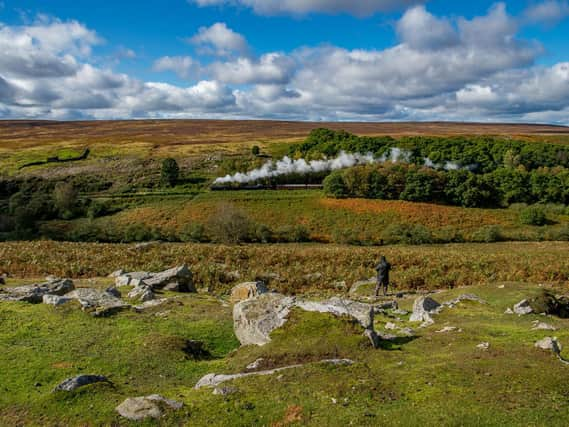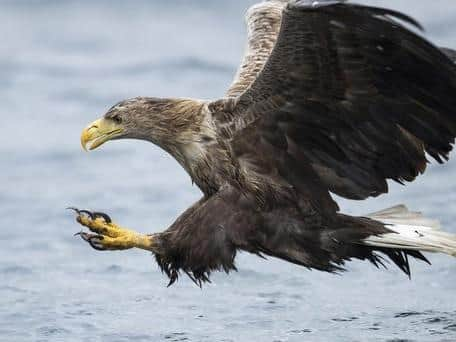Roaming sea eagles now thought to have settled permanently in the North York Moors


The white-tailed eagles are native to Britain but were hunted to extinction by 1918, when the last bird was shot in Scotland, although they vanished from England in the 18th century. The young male and female come from a small population of four that was reintroduced to the Isle of Wight last summer.
Although the birds remained closer to the island throughout the winter, as the weather improved they began to roam around the country, with two making their way to the North York Moors National Park.


Advertisement
Hide AdAdvertisement
Hide AdThey were first spotted in April and their GPS trackers revealed they had previously flown around central and eastern England and that the male had visited the Peak District.
The juveniles spend the first few years of their life exploring before returning to their birthplace to breed when they are four to five years old.
Ecologists from Forestry England and the Roy Dennis Wildlife Foundation have been monitoring the activity of the North York Moors pair and it was expected that they would only remain in the area for a short length of time.
Yet an update from the charity has now confirmed that they are believed to have permanently settled in the moors.
Advertisement
Hide AdAdvertisement
Hide AdThe male, tagged as G393, has spent the entire month of May in the National Park and the female, G318, has been spending 'prolonged' periods of time with him since May 27.
He was the most adventurous of the four birds released on the Isle of Wight, travelling over 1,000 miles between March 20 and April 30. He first visited the North York Moors between April 5-12, returning again on April 30 after his spell in the Peak District. He crossed over Huddersfield, Leeds and York during the three-hour, 72-mile journey.
Since then, apart from a flight to the coast at Loftus, near Redcar, he has remained in the local area.
Initially, he occupied an area to the south of that where the female, who arrived in the North York Moors on April 5, had been seen. They met on May 1, but did not begin to spend more time together for almost another month.
Advertisement
Hide AdAdvertisement
Hide AdAccording to the conservationists studying their movements, 'rabbits are abundant' at the locations where the pair have been recorded, reducing the need for them to range further afield. They spent long periods of May 'perched' rather than travelling.
The other two birds released onto the island last August have remained on the south coast.
It is now hoped that the Yorkshire pair will remain together and eventually breed in the area when they reach maturity.
Sea eagles from Europe are also occasionally seen in Britain and the project has been able to track the arrivals of these continental visitors as well.
Sea eagle facts from Forestry England
Advertisement
Hide AdAdvertisement
Hide Ad- White-tailed eagles can live to the age of 25, and do not breed until they are five years old. In their first two years they explore widely, learning the landscape as they go and often roaming 200km from their nest site, sometimes even beyond that. Once they get closer to maturity most return to their home range, the Solent in this case, and the males will set up territory in hope of finding a mate. Then, hopefully, they will breed.
- The bird suffered a similar fate in Europe and became extinct in France in the 1950s, but strongholds survived in Scandinavia and their populations have begun to recover. The nearest population is in the Netherlands, and reintroduced birds live in Scotland and Ireland.
- Five eagles from Europe are thought to have visited Britain over winter - a three-year-old bird from Sweden was tracked to the New Forest.
- Although there were sightings of the North York Moors male as he explored Oxfordshire and Buckinghamshire over the winter, the project managers say there have been surprisingly few sightings of the eagles on the move.
Advertisement
Hide AdAdvertisement
Hide Ad- They were reintroduced to the west coast of Scotland in the 1970s.
- They feed on fish, birds, mammals and carrion.
- Some farmers have objected to their reintroduction over fears they will attack livestock.